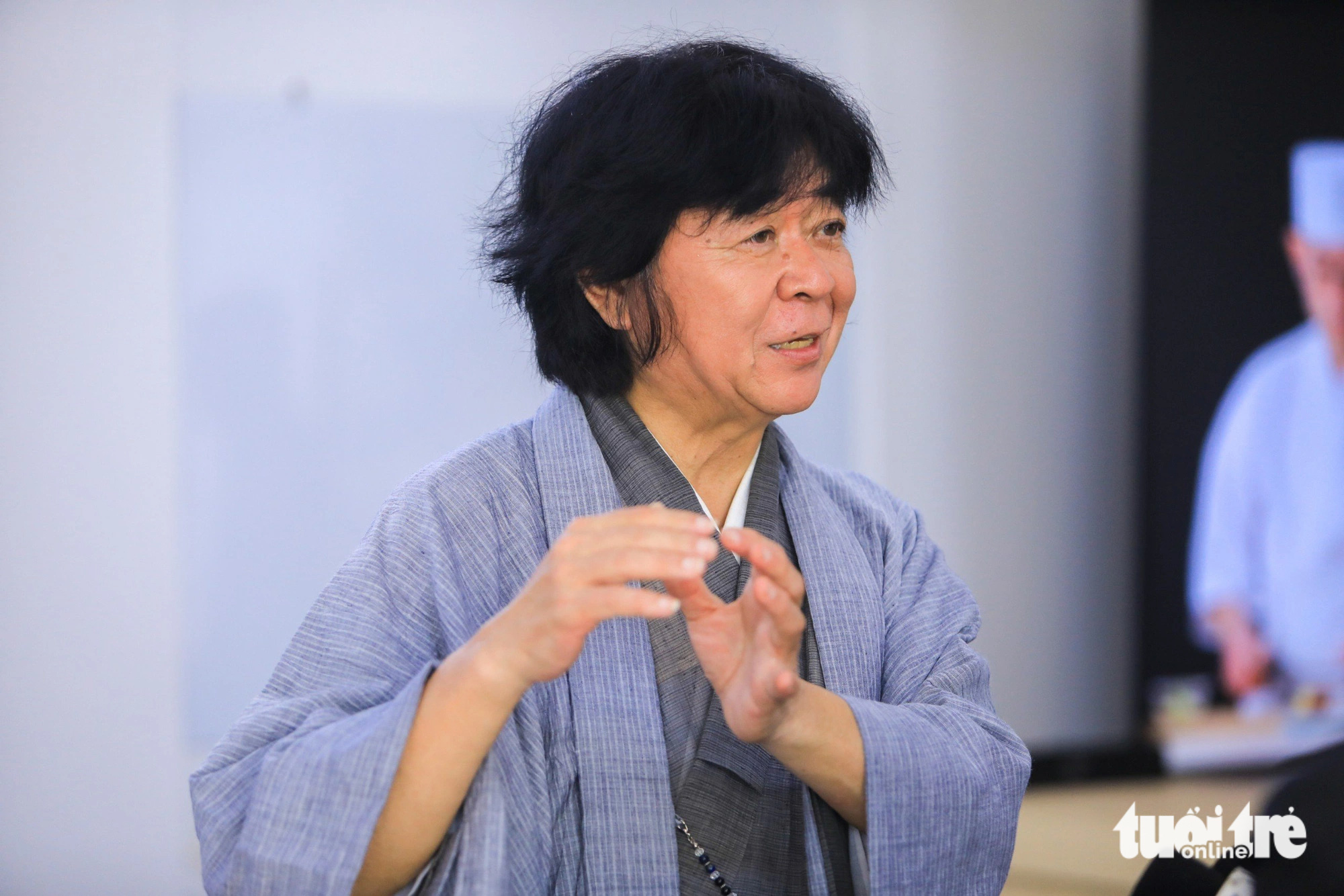
Professor Hibino Terutoshi has more than 35 years of research on sushi - Photo: DANH KHANG
Professor Hibino Terutoshi is working at Aichi Shukutoku University, Aichi Prefecture, Japan. Mr. Hibino has more than 35 years of research on sushi and is also a rare expert who has delved deeply into this country's iconic dish.
He came to Vietnam to be the curator for the exhibition I love sushi (open until May 5) organized by the Embassy of Japan and had a talk with sushi lovers, taking place at the Japan Foundation Center for Cultural Exchange ( Hanoi ) on the afternoon of April 21.
Is Vietnam the origin of ancient sushi?
Mr. Hibino Terutoshi shared that sushi was mentioned in the oldest Japanese document in the 8th century and it crossed the sea from China to Japan more than a millennium ago.
There are many theories about the origin of sushi.
Among them, an ancient Chinese document about 2,000 years ago mentioned that this dish was introduced to China from another place.
“It is southern China, specifically the Mekong River basin,” said Professor Hibino Terutoshi.
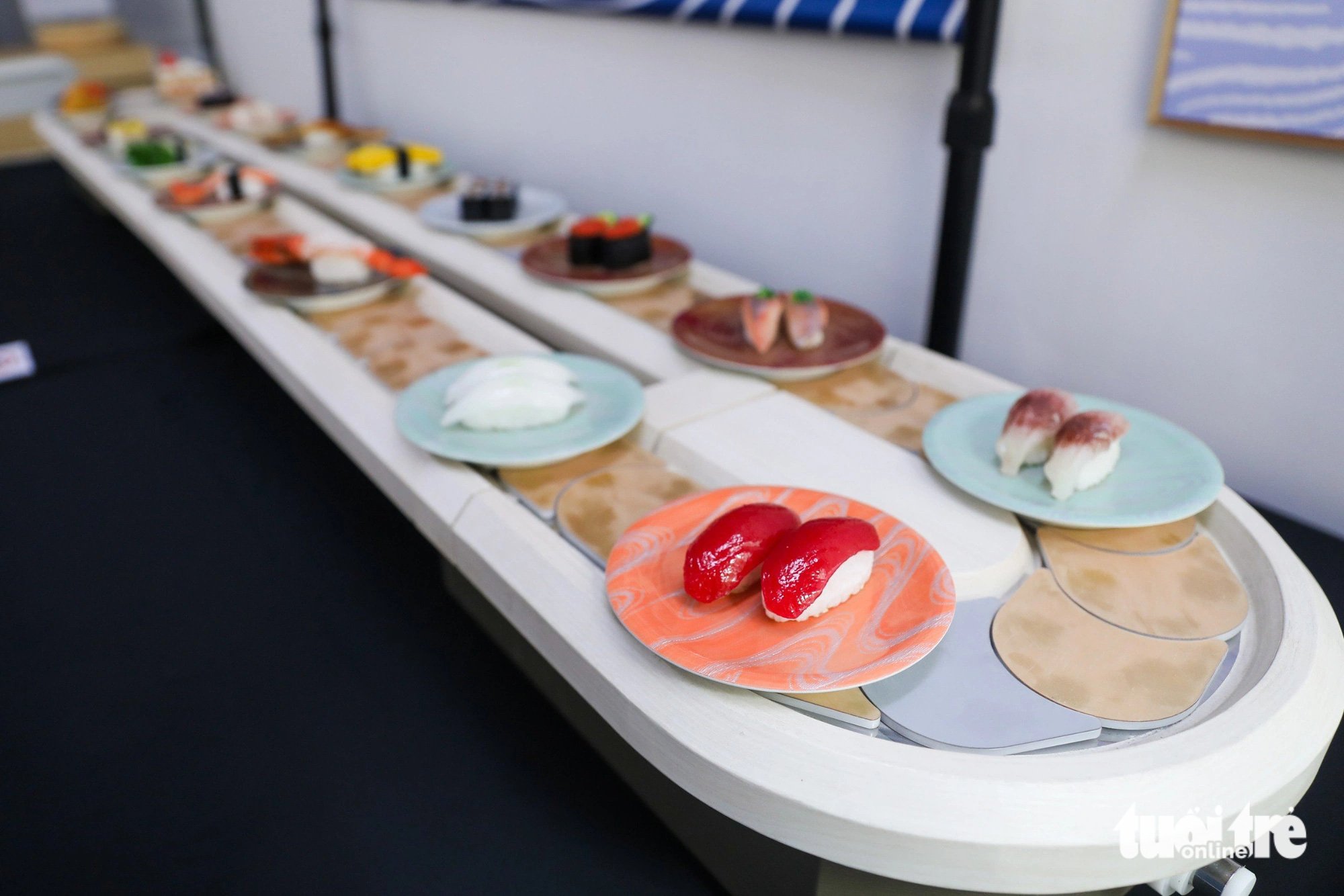
Sushi today has many diverse variations - Photo: DANH KHANG
Even today, one can still find various forms of nare-zushi (fermented sushi) in this area, which has a long tradition of wet rice cultivation.
Fish can be caught in rice fields and surrounding canals. Rice farmers can preserve them by salting and placing them in steamed rice to trigger lactic acid fermentation.
Some people say that Vietnam is not the origin, nor does it have ancient sushi, so he has visited Vietnam many times before to find out "if that is true".
So is Vietnam the origin of ancient sushi (narezushi - fermented fish)?
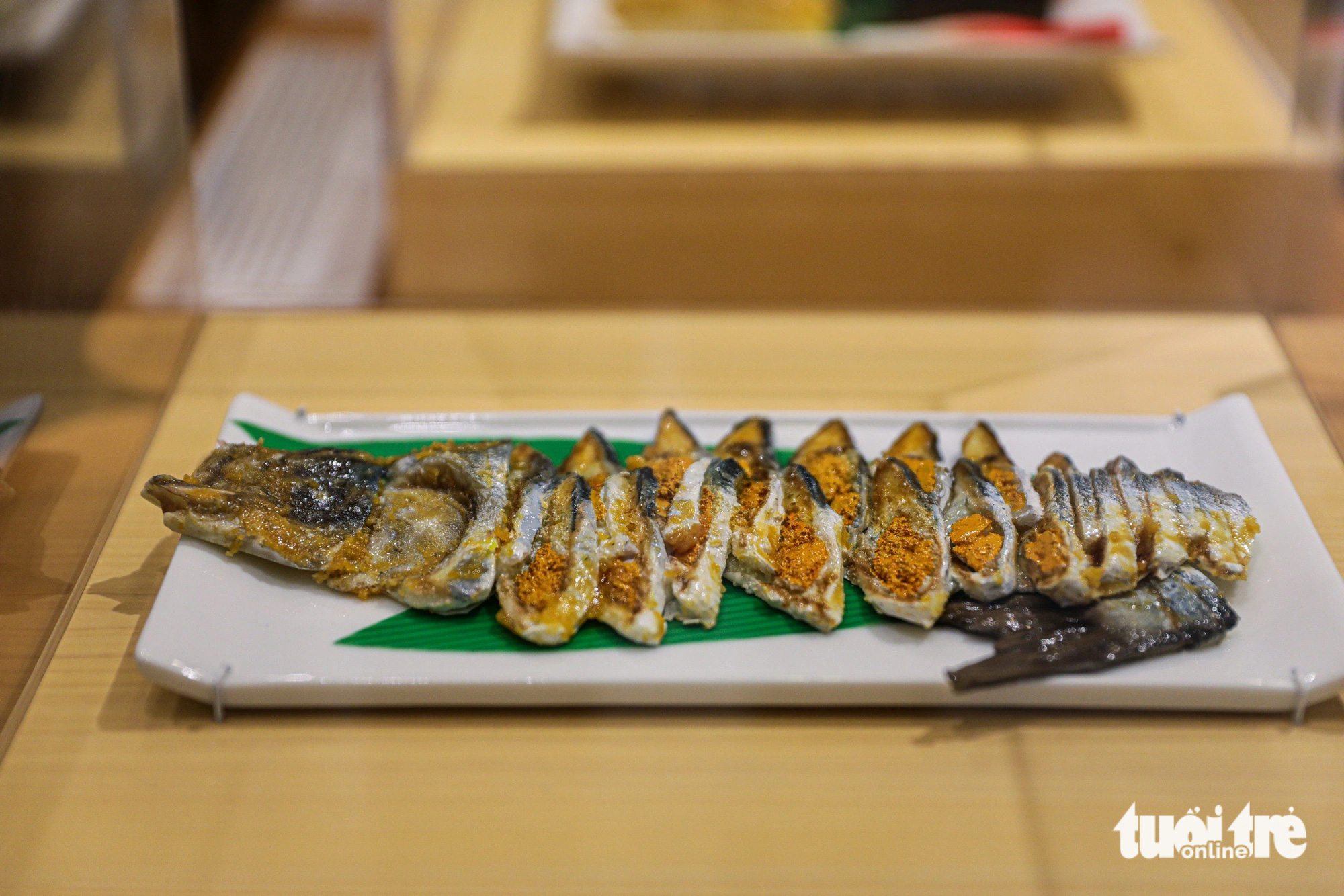
Japanese sushi goes beyond borders, conquering many diners around the world - Photo: DANH KHANG
There are some clues
He said he had done field work in Cambodia and some southern areas of Vietnam.
In fact, there are some dishes that resemble ancient sushi. For example, the dish of mam bo hoc (using cooked rice and fermented fish - PV) in Tra Vinh. He also had a report on this.
When he said that, someone responded that it was a Khmer dish brought from Cambodia, so it cannot be said that ancient sushi is part of Vietnamese cuisine.
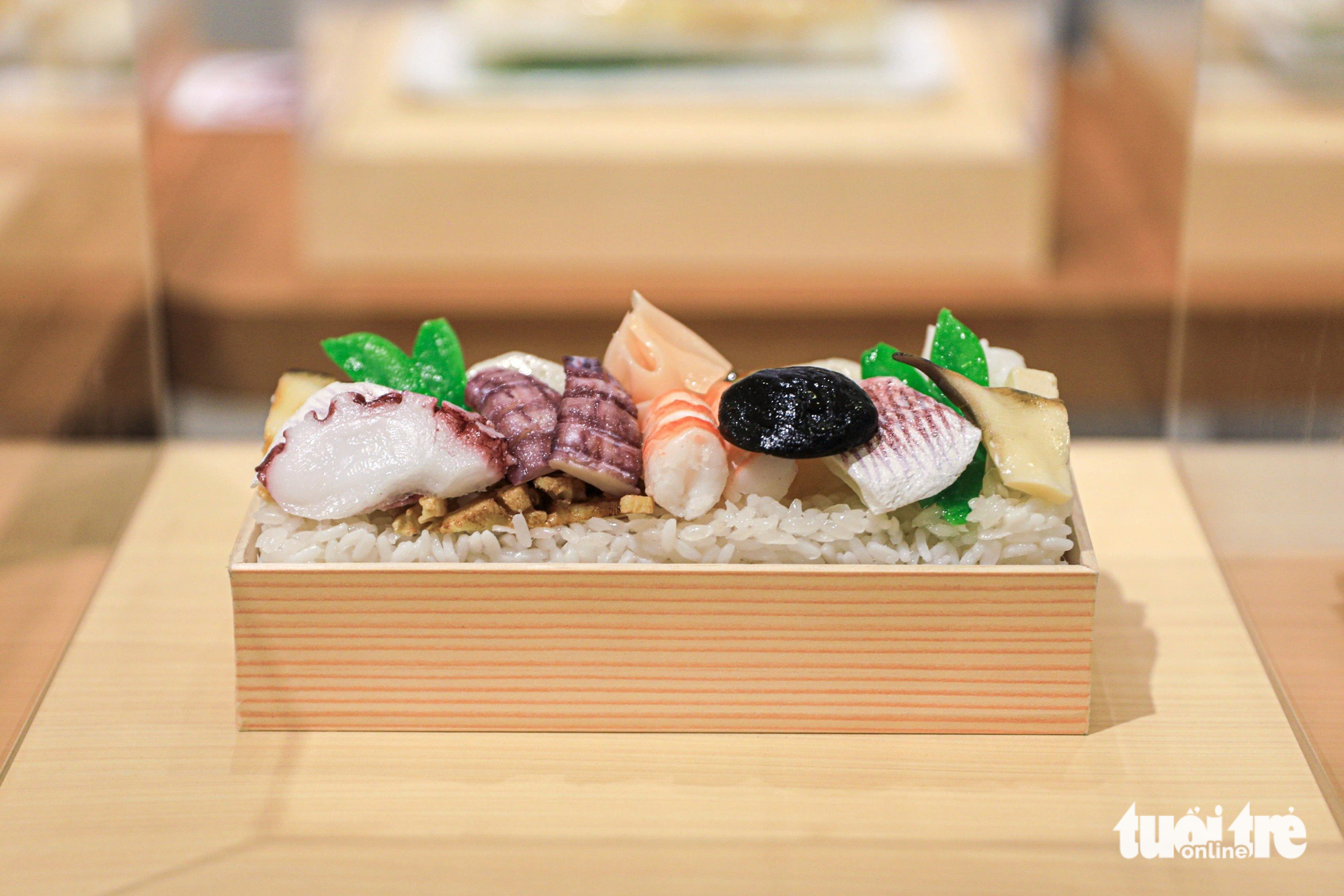
There are many theories about the origin of sushi - Photo: DANH KHANG
He accepted that feedback and decided to continue his field trip up to the mountainous region of Northern Vietnam to see if there was any similar dish.
When talking with some Vietnamese culinary researchers, he learned that in some mountainous regions in Central Vietnam, such as Phuoc Son (Quang Nam) or the northern mountainous regions such as Tuyen Quang, ethnic minorities have the custom of fermenting sour fish.
So there may be a clue that in the North of Vietnam there is a custom of fermenting fish. Perhaps many Japanese researchers do not know this.
Professor Hibino Terutoshi said he thought this research was over, but with new clues, he will continue to find the answer to the above question.
See more sushi at the I Love Sushi exhibition:
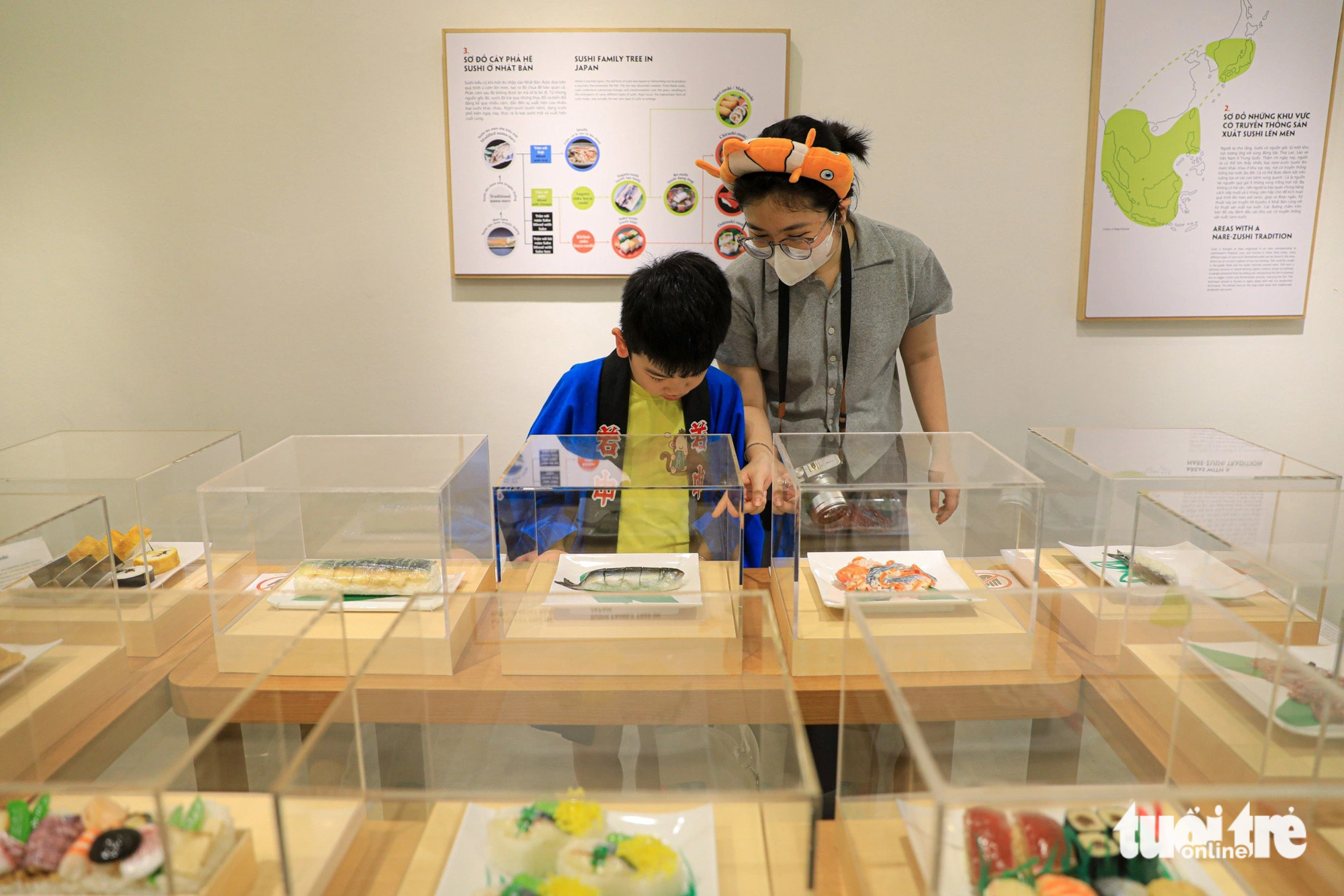
Exhibition opens until May 5 - Photo: DANH KHANG
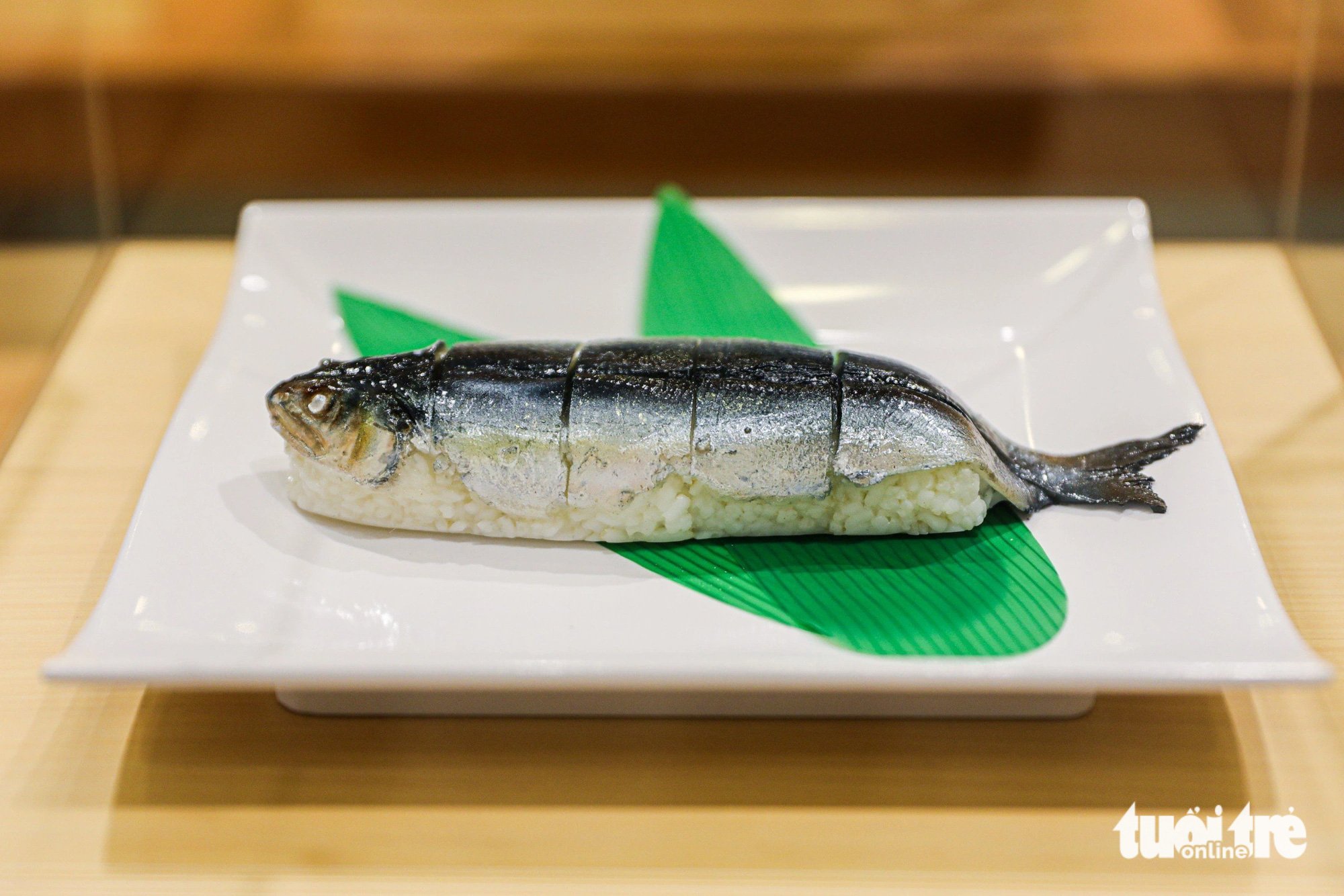
Sugata-zushi sushi uses sweetfish (fragrant fish) which is prepared by adding vinegar to white rice to achieve the sourness of sushi, helping the production process to be quick and not fermented - Photo: DANH KHANG
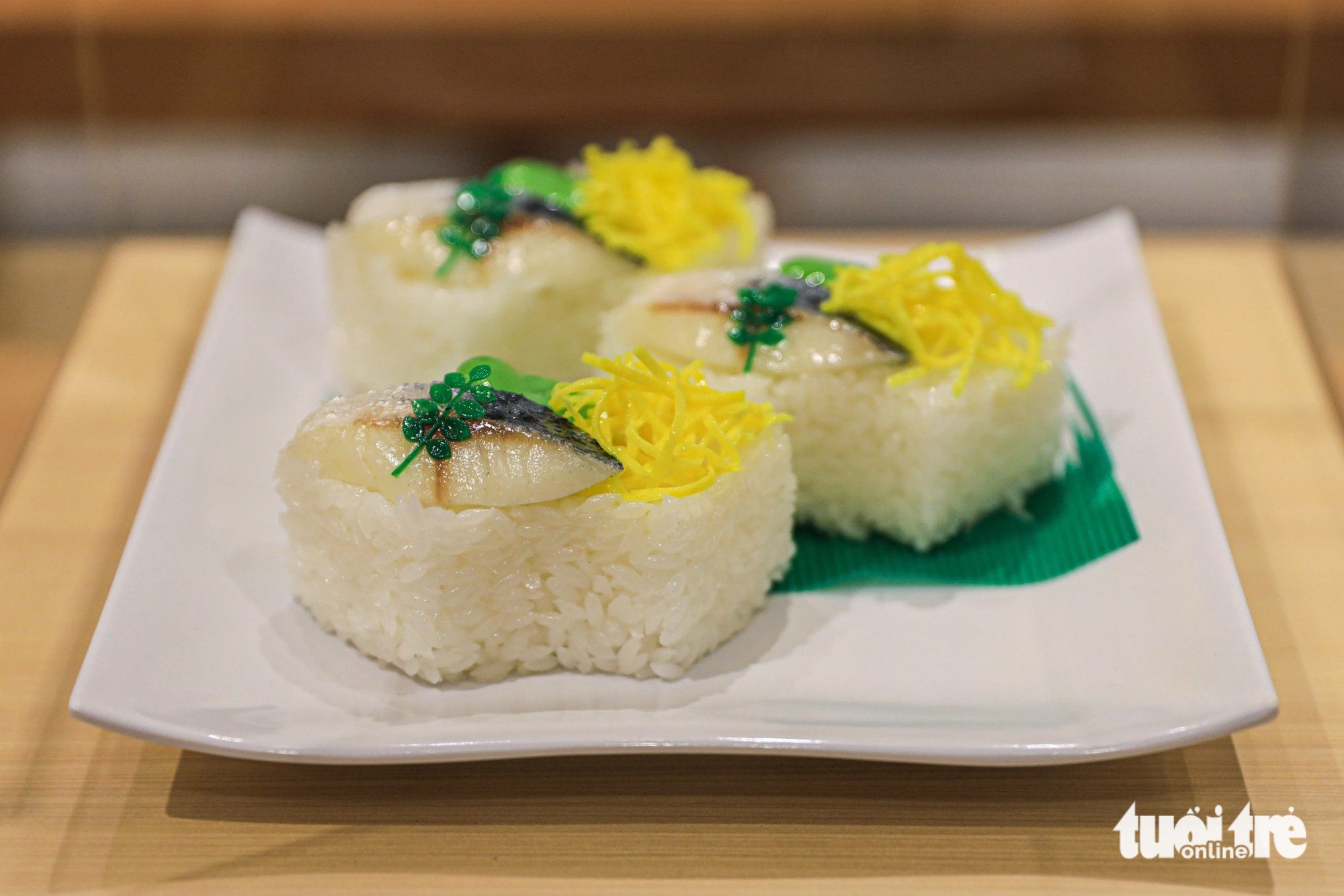
Oshinuki-zushi sushi is made in many different shapes. The bride goes to her parents' house to make Oshinuki-zushi and bring it back to her husband's family as a gift to strengthen the bond between the two families - Photo: DANH KHANG
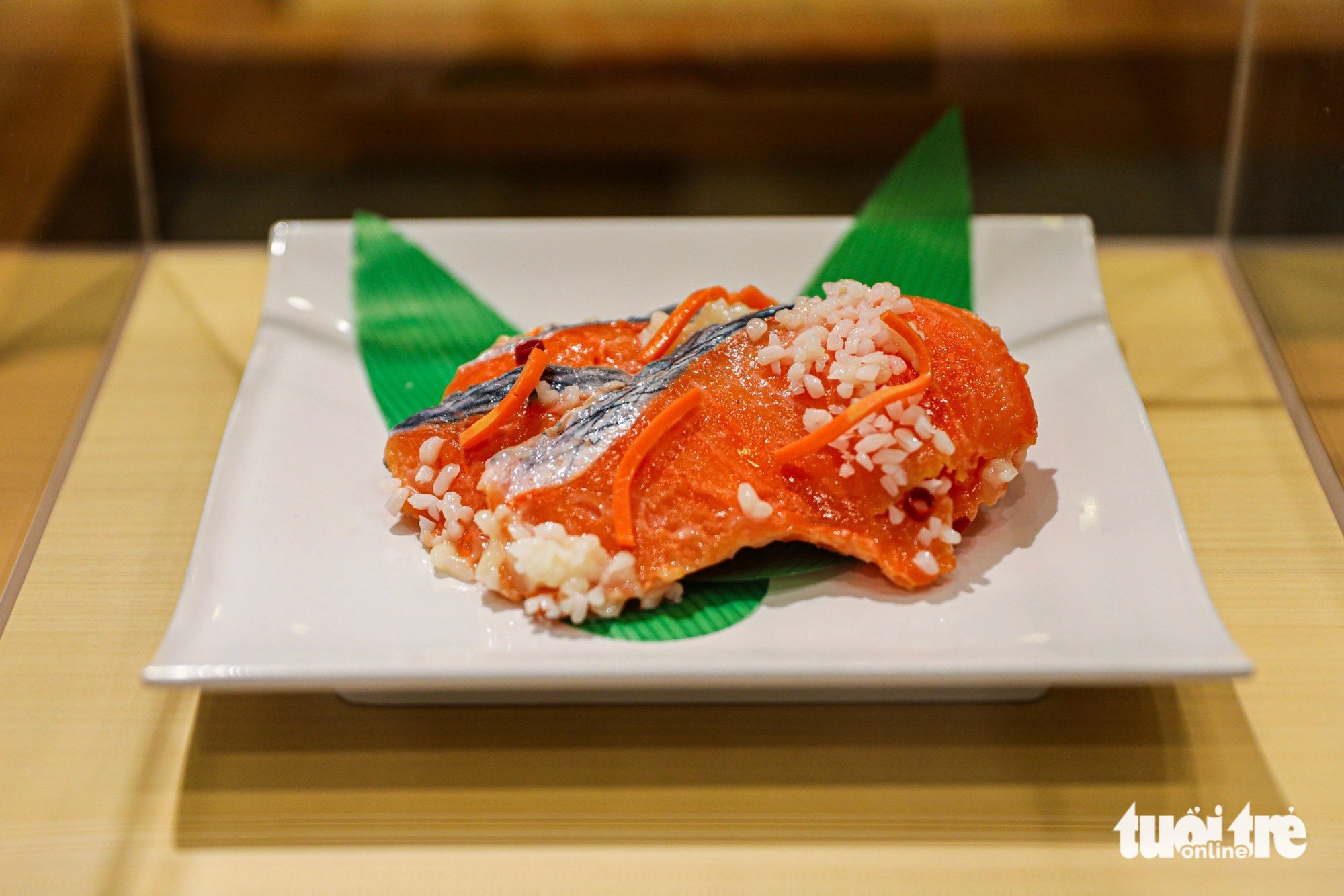
Izushi sushi is a type of nare-zushi (nama-nare) with vegetables and koji mold mixed with rice and fish fermented in Hokkaido, a popular dish during the New Year - Photo: DANH KHANG
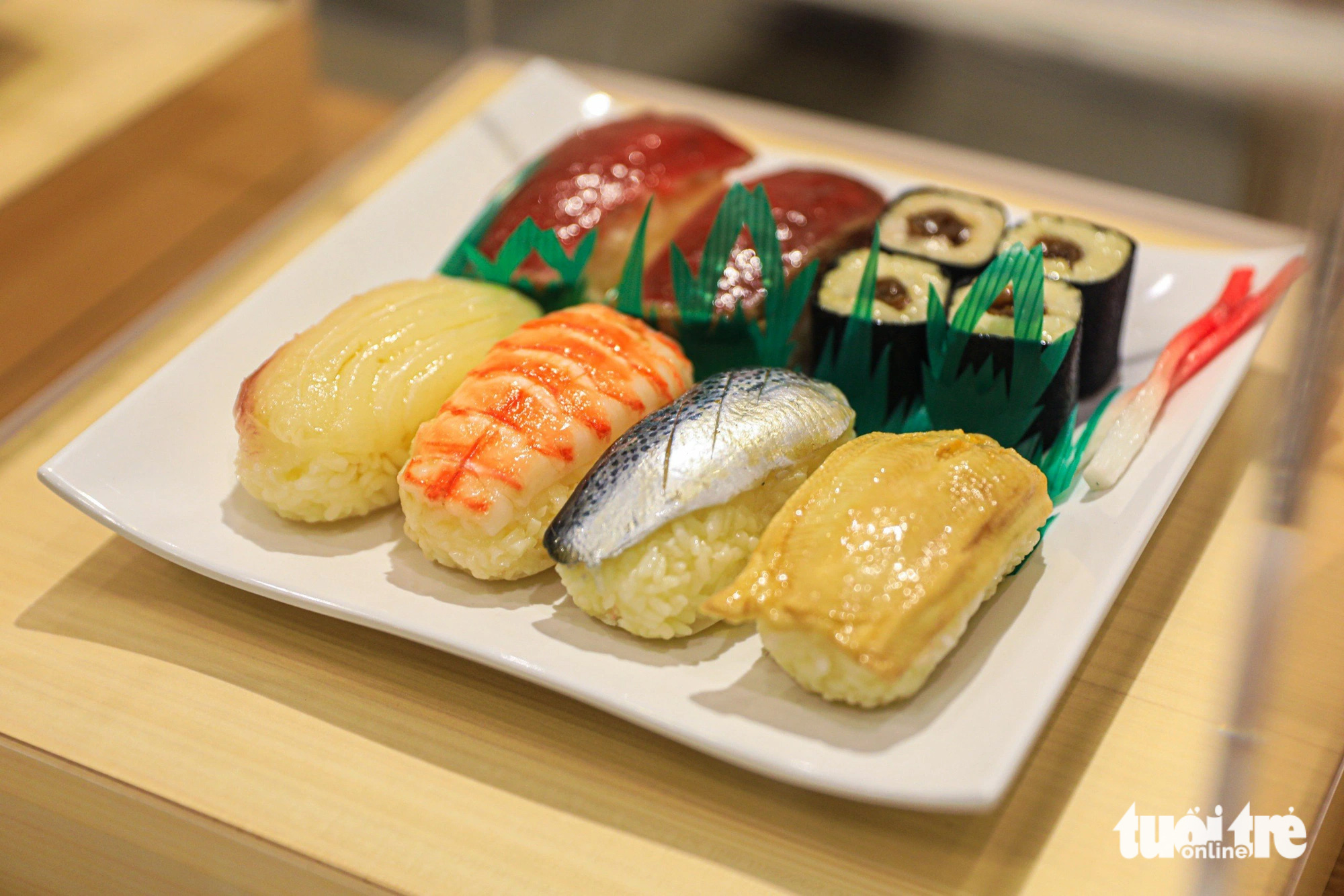
Nigiri-Zushi is a new type of sushi that has been served for quick meals since around the 1820s. Today, nigiri is what most people think of when they think of sushi, but sushi has a long history and of the many different forms of sushi, nigiri is actually the newest - Photo: DANH KHANG
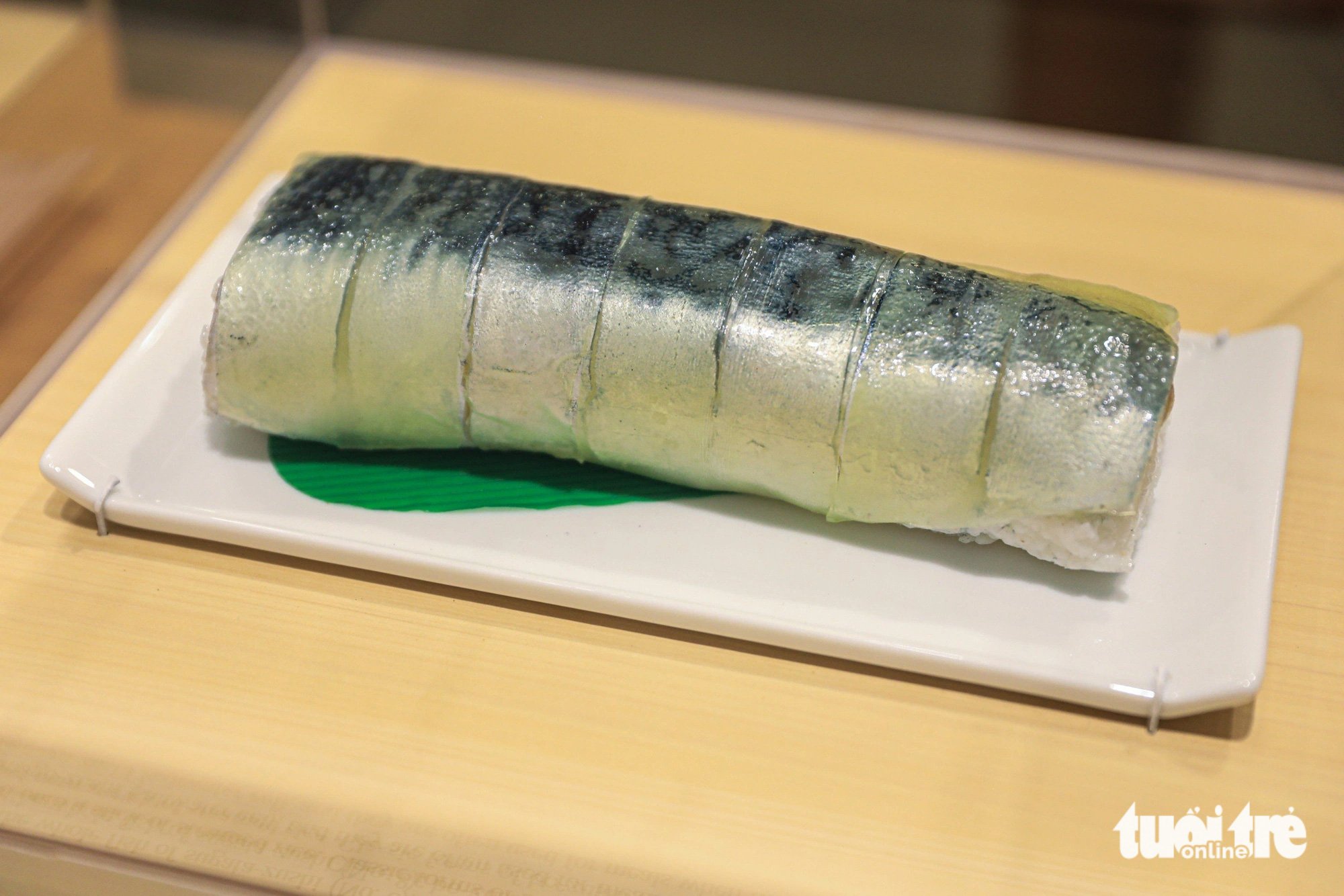
Unlike whole sugata-zushi, Bo-zushi does not use the head and tail of the fish. The fillet is pressed into a stick of white rice, often eaten during festivals or other celebrations - Photo: DANH KHANG
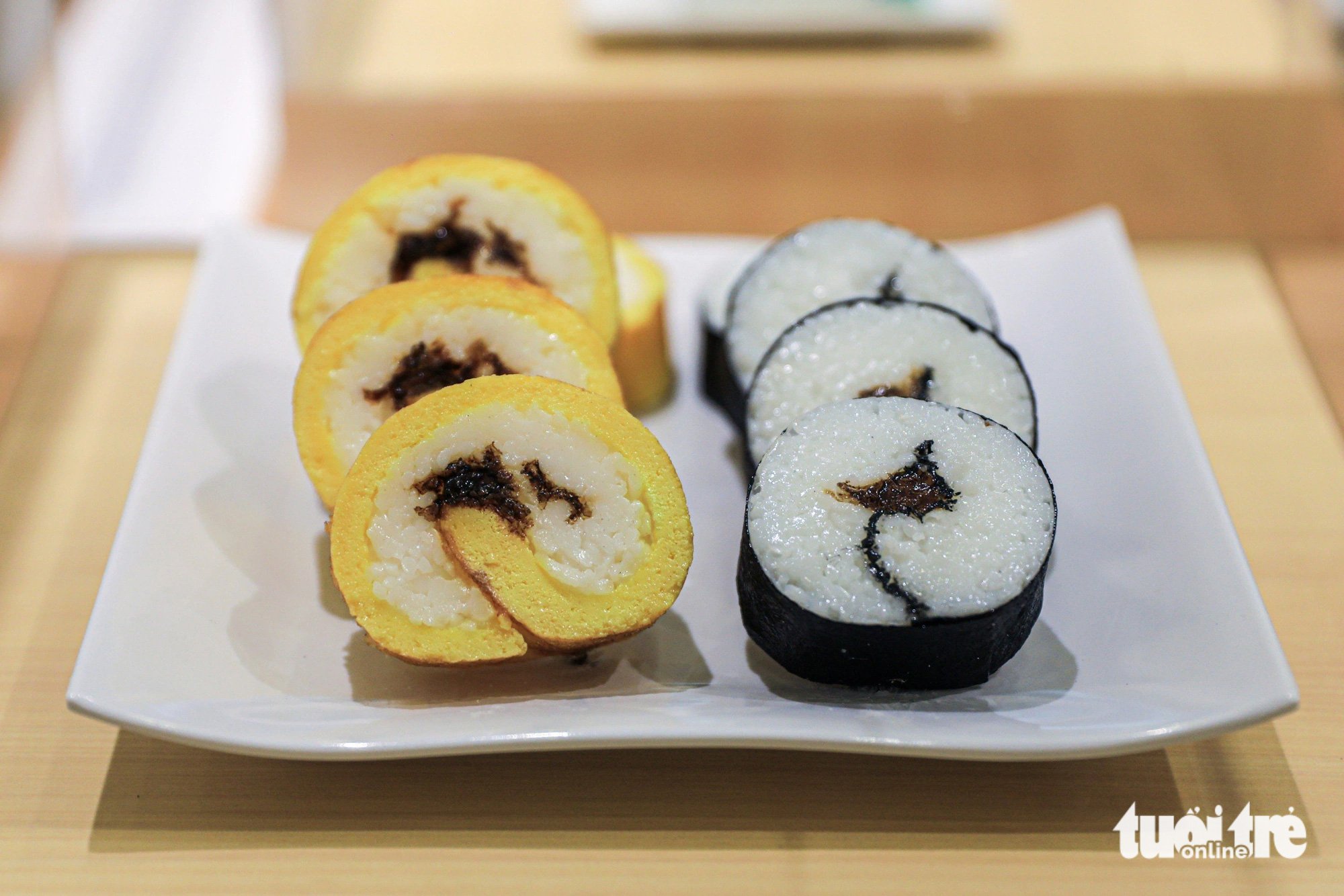
Maki-zushi quickly became popular as a simple and cheap dish. The coating surrounding the rice and fillings is usually nori, a type of seaweed that is dried into sheets and is edible - Photo: DANH KHANG
Sushi is perhaps the most typical example of washoku (traditional Japanese cuisine), with a history of over 1,200 years with many diverse variations in form and preparation.
Ancient sushi was very different from the sushi we know today. It was made by placing salted fish in a wooden tub or bucket with cooked rice and then fermenting it for several months.
Today's sushi uses vinegared rice, but not a drop of vinegar was added to this early sushi. However, it had a sour taste due to the fermentation of the rice.
"In addition to ball-shaped sushi, there is also compressed sushi; and the world of sushi is much more diverse," said Professor Hibino Terutoshi.
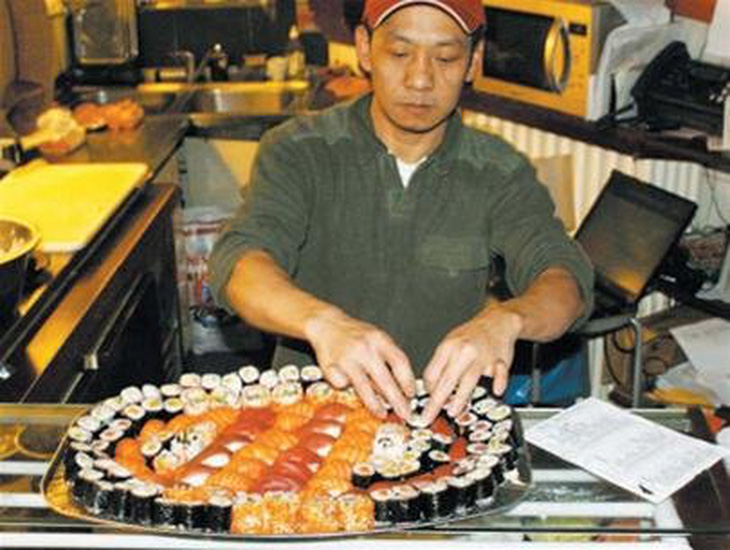 Vietnamese Sushi takes the throne
Vietnamese Sushi takes the throneSource



![[Photo] Party and State leaders attend the special art program "You are Ho Chi Minh"](https://vphoto.vietnam.vn/thumb/1200x675/vietnam/resource/IMAGE/2025/5/18/6895913f94fd4c51aa4564ab14c3f250)


![[Photo] Special flag-raising ceremony to celebrate the 135th birthday of President Ho Chi Minh](https://vphoto.vietnam.vn/thumb/1200x675/vietnam/resource/IMAGE/2025/5/19/1c5ec80249cc4ef3a5226e366e7e58f1)
![[Photo] Party and State leaders visit President Ho Chi Minh's Mausoleum](https://vphoto.vietnam.vn/thumb/1200x675/vietnam/resource/IMAGE/2025/5/19/d7e02f242af84752902b22a7208674ac)
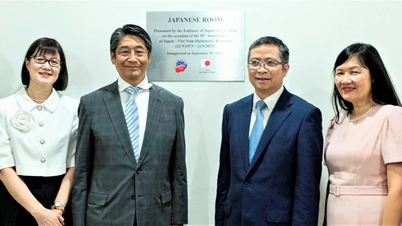



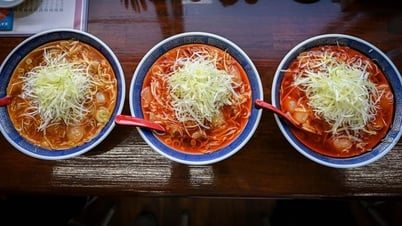




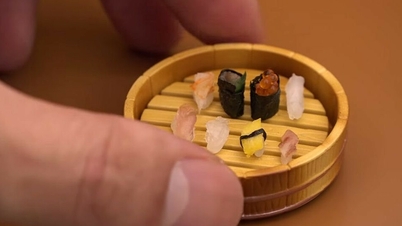



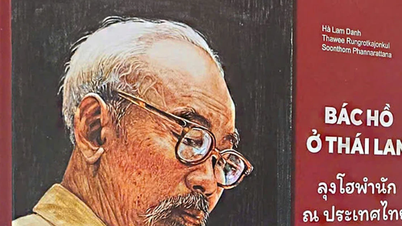




















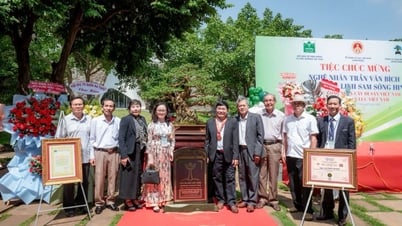
































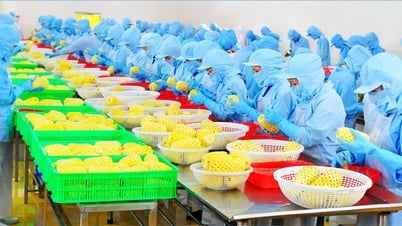





















Comment (0)